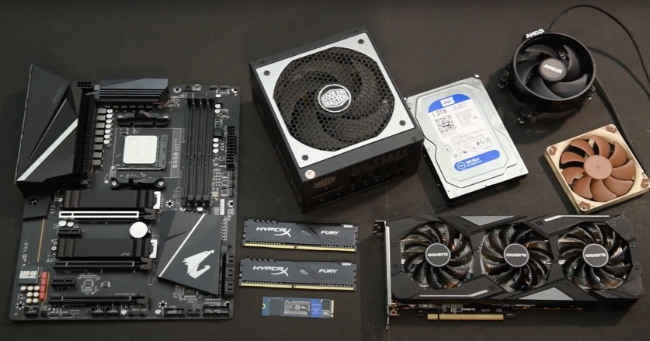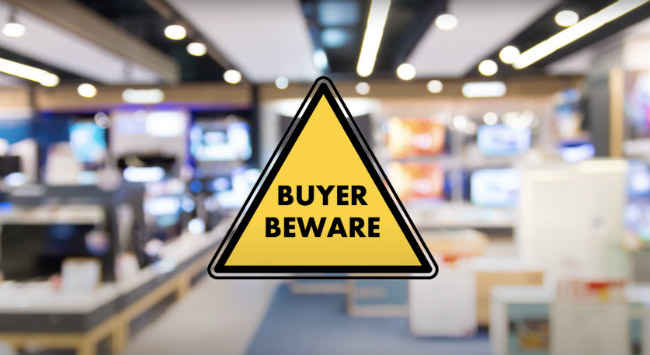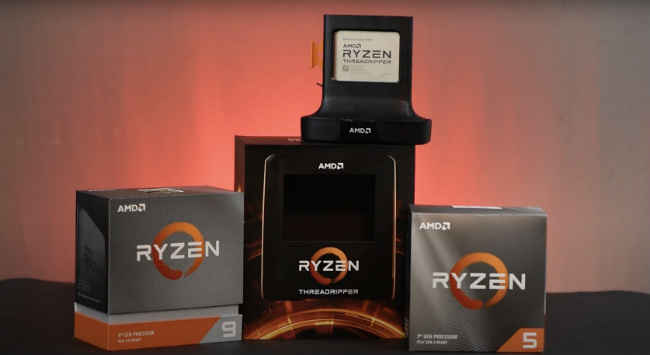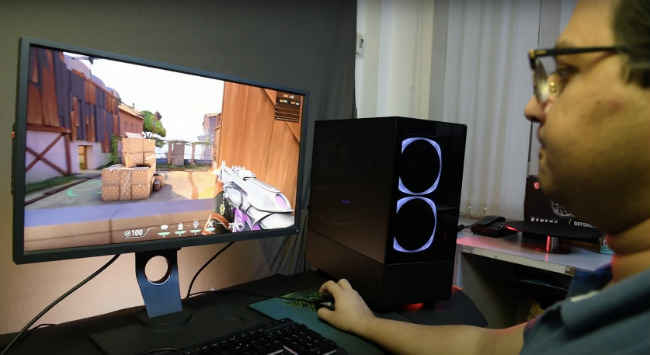Build Your Own PC: How to get the best deals on computer parts
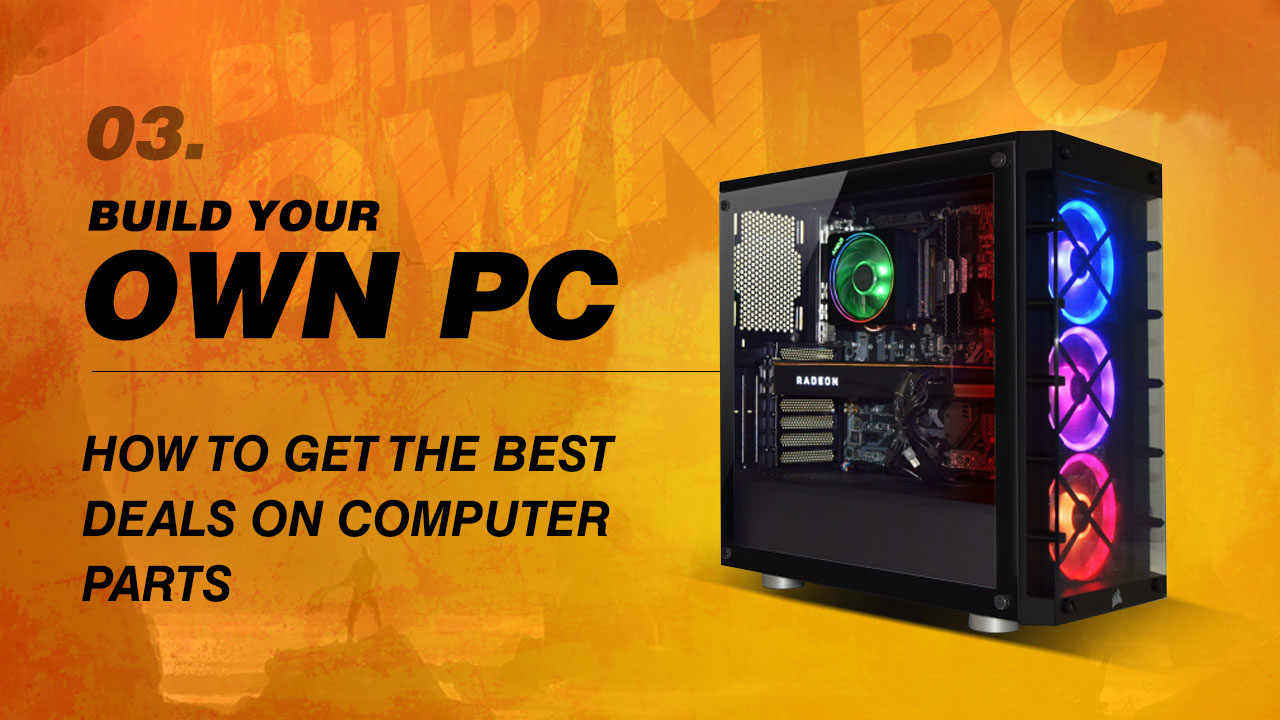
Welcome to the third article in the “Build Your Own PC” series, powered by AMD Ryzen and Radeon. While our previous articles helped you find the right type of PC for your needs as well as the components that you can use to build it, now it's time to understand how to go about actually buying those components.
If you’ve identified the right components for your build, you’re already quite a long way along the road to building your own PC. However, so far, you’ve only invested your time and effort, but now it’s time to invest your money in buying those components.
Buying the components for the best prices possible isn’t as easy as one would think. Sure, you could take a walk down Lamington Road, Ritchie Street, or SP Road with a fat wad of cash… but chances are you’ll be identified as a mark from miles away. In the digital realm you could click on the first link that appears for your component searches, but you will probably not get the most bang for your buck. In this video we’ll try to arm you with all the know how you need to get the right deals from the right places.
For now, if that list of hardware looks daunting to you (and maybe you’re wallet too), fear not, simply follow along and get some info. We’re going to look into the various sources you can go with, the benefits and pitfalls of each, as well as some of the emerging trends in component shopping and how to make the most of them. Let’s first start with understanding the basic scenario you’re facing right now.
How do you begin shopping for components?
At its core, shopping for PC components is the same as shopping for anything else – you need to be looking for the best value for your money as well as a convenient and trustworthy shopping experience. When it comes to buying PC components, offline stores have retained quite a bit of popularity for a while now, especially among veteran PC builders who know the ins and outs of various offline markets across the country.
Places like Lamington Road in Mumbai and Nehru Place in Delhi have served many aspiring and established PC builders for years. In fact, for many people, the store owners and staff have become helping hands in their build process, where they might even recommend better deals and highlight possible compatibility issues in the items you’re looking to purchase. However, it is usually only recommended for seasoned shoppers to use the services of these markets and there’s a reason behind that.
Good things are often accompanied by bad things. Unfortunately, that is also applicable to shopping for computer hardware offline. Owing to a number of cases of various scams and frauds pulled off in the notable IT markets mentioned earlier, these markets have also gained the reputation of being a risky place to spend your money.
For instance, a store owner might recommend a different product from the one you’re looking for, assuring you that it is a better product while it is in fact not one. A more ingenious version of this is where you ask for a specific product, but they give you a different product with some commonality in the specifications which is the only thing that gets mentioned on the invoice as well. You can find multiple instances of these and other scams in a simple Google search, which have, unfortunately, even harmed the reputations of other genuine stores in such markets.
Don’t get us wrong, these markets can often lead you to a good deal, but you should always exercise absolute caution when going to shop there. Always check for official, authorised retailers. If possible, do your research on online prices beforehand and stick to the components you want. On the other hand, you could just go with online shopping and forget about most of these problems.
How to go about shopping for PC Components online
In this section of the video we’ll discuss how to get the best deals online. Shopping online for PC components was not a real possibility not too long ago. However, since then, multiple online stores of reputable real world shops have come up. Stores like Primeabgb, MDComputers and Vedant Computers boast of a large number of loyal patrons for components of all types and price ranges. They certainly cover the obvious benefit of being able to check the specifications of your components in great detail. In addition to that, you get well-defined return and refund policies to avoid confusion later.
The specialised stores that we just mentioned used to also be the only places that could assure availability. Not too long ago, popular eCommerce websites didn’t match up to these specialised stores in terms of stocking updated PC components, but that has already changed a lot. In recent times, eCommerce marketplaces have greatly expanded the availability of all kinds of PC hardware – particularly Amazon – making it possible for you to shop for your build end-to-end without ever needing to leave Amazon in most cases.
How does that help you? Chances are that you’ve already been shopping on Amazon for the reliable ordering and delivery experience they provide, as well as detailed customer reviews, seller evaluation and feedback options. Obviously, all of that can make your PC component shopping experience quite peaceful.
Broadly when shopping online, you can also compare product details with those on the brand website. Additionally, online shopping allows you many more tools that offline shopping cannot compare with. But to make the most of them, you have to do one thing:
You have to go beyond the store
What this essentially means is you have to use all the available resources online for things like price comparison, checking pricing trends, coupons, card discounts, shopping festivals and more. For instance, you can use reliable browser add-ons and price tracking services to compare prices across multiple websites in real-time. You can even set up certain services to alert you when the price of a particular component drops below a certain point. Some popular options are Keepa.com and BuyHatke which give you features like historic price graphs, automatic coupon application, price comparison and even alerts for flash sales.
You can even compare these prices with some offline stores. For example, Delta Peripherals has a detailed price list of all components they sell up on their website, where all you need to do is run a Ctrl+F search to find the indicative offline price for the exact component you want and compare it with the rates you’re getting online.
Another great source to stay updated with online prices is hardware forums. Places like Digit Forum, Tech Enclave and r/indiangaming have threads where like-minded PC builders post build recommendations along with updated prices from the best-priced source. Many of these places have “bad seller” lists too.
If you combine all of these information sources properly you’re bound to get the best deal on what you’re looking for.
Now, let’s figure out how to find what you’re looking for
Even with the convenience of online shopping and the added benefits of doing so on Amazon, sometimes, it is not easy to find the components you’re looking for on the website – often due to a large number of options or even improperly named listings. Various sellers might follow different naming conventions for their products and also provide specifications in different formats. This might end up confusing you further when you’re looking for, say, the latest-gen quad-core processors and the listings that show up have no mention of the generation at all. Fortunately, Amazon provides you with all the tools necessary to get around this through its search functionality and product classification. Without boring you with more such terms, let us show you an example.
Let us suppose that you’re looking for the AMD Ryzen 5 3600X processor for your build. The simplest way to go about that is to enter that exact keyword on the Amazon search bar. If the multiple results leave you with some doubts, another approach to take is to look for the model number. To do that, go to the brand’s website, in this case, AMD, and look up the exact model you want. For the AMD Ryzen 5 3600X, you’ll be looking for something known as the OPN-PIB number, which is 100-100000022BOX in this case. Searching with that on the Amazon search bar will lead you to the single model correct for you.
If narrow searches don’t work start broadening your searches. For example you can try locating your exact component via the category navigation. Take what you know about the AMD Ryzen 5 3600X and go to Amazon’s category tab, click on Mobiles, Computers > Components. Once here as an added bonus you’ll also get a category landing page with attractive deals. In the landing page, click on processors from the filters on the left. This should refresh the page with new products and filters. Use the filters on the left to pick ‘Hexa-core’ and ‘AMD’ for ‘Number of Cores’ and ‘Brands’ respectively. Chances are that you’ll get a few results to look through, among which you will find the processor you desire.
Just make sure you’ve got as much information about the products you want before you go hunting, and you should be fine. Once you’ve ordered all the products you need, the real fun begins – finally putting it all together into a PC! And this step is what our next article is all about. Check out the links below to view the rest of the articles in our ‘Built Your Own PC’ series.
1. Build Your Own PC: The PC built for your needs
2. Build Your Own PC: Which CPU, GPU, Motherboard, etc should you buy
3. Build Your Own PC: How to get the best deals on computer parts (You are here)
4. Build Your Own PC: How to assemble a PC
5. Build Your Own PC: How to install Windows 10 and setup your PC
6. Build Your Own PC: Testing for cooling and performance
7. Build Your Own PC: Common mistakes while building a PC
[Sponsored Post]

